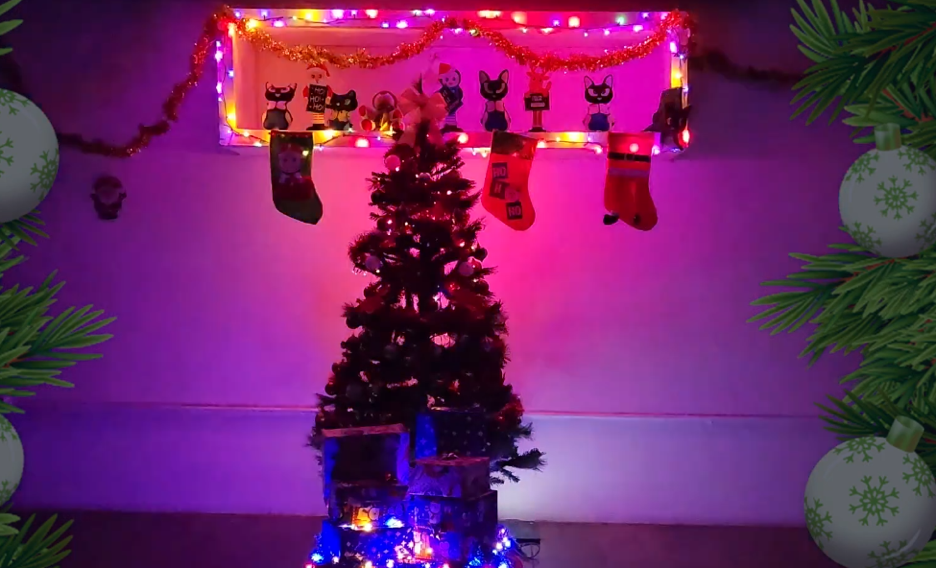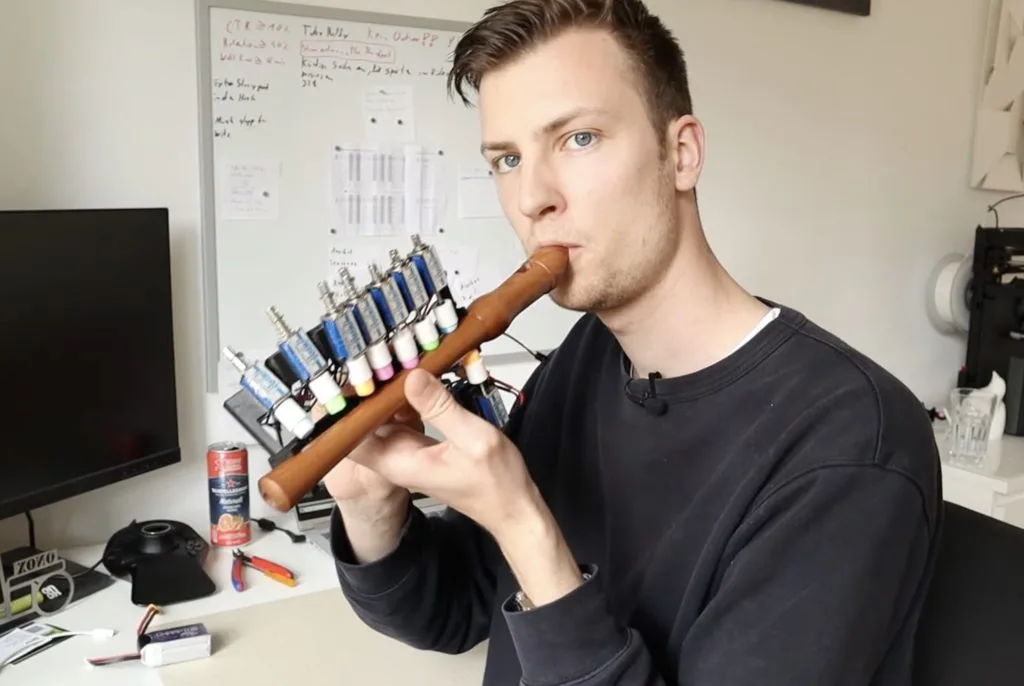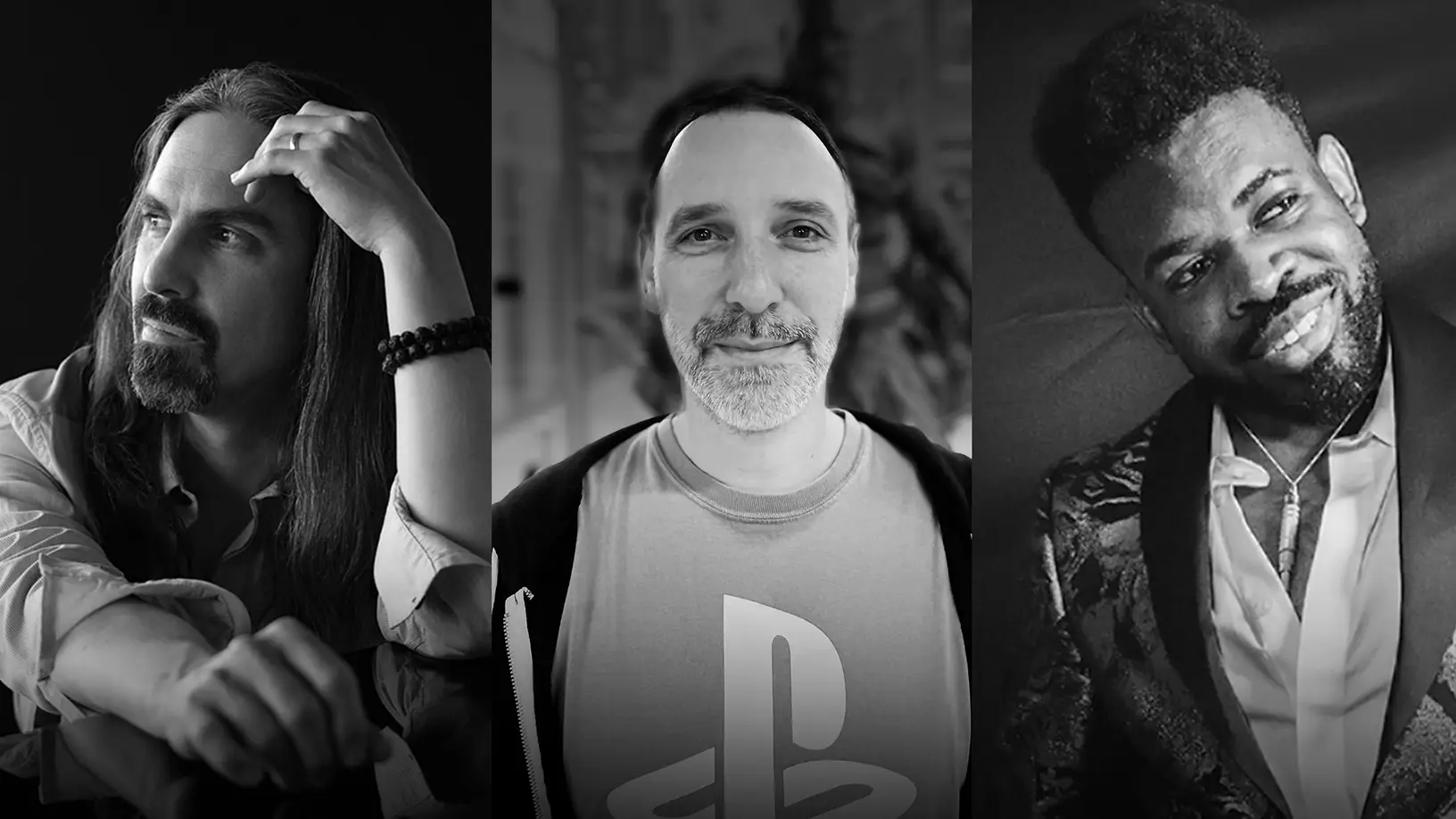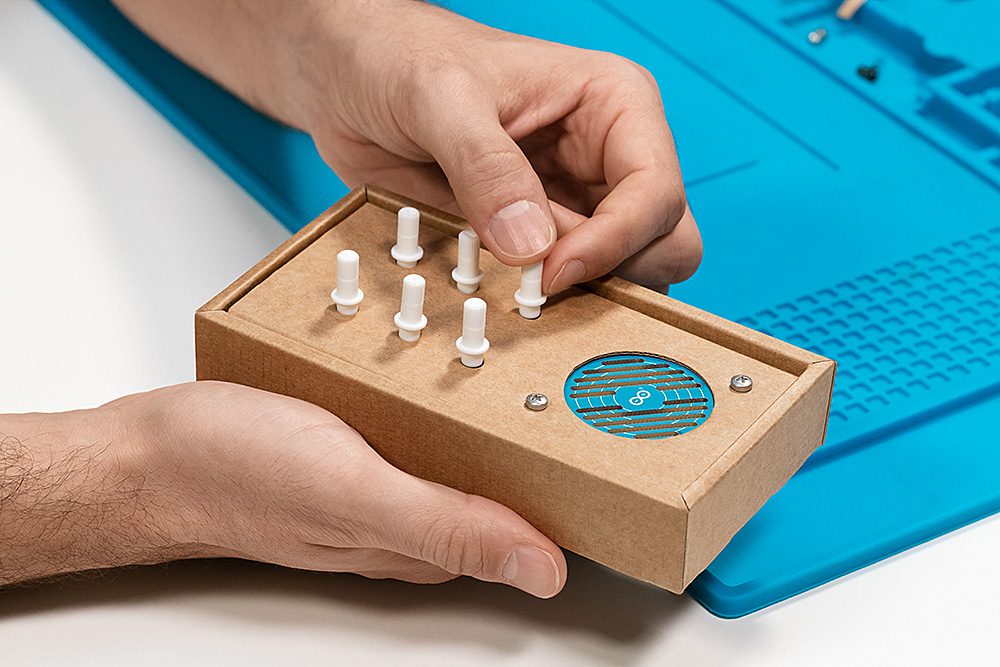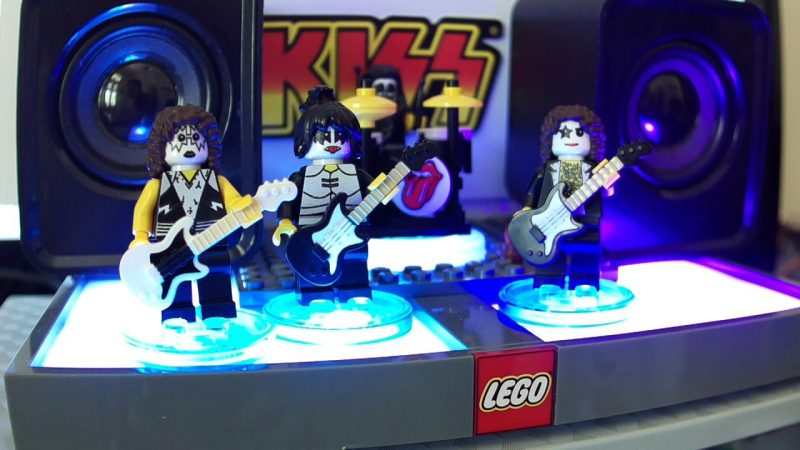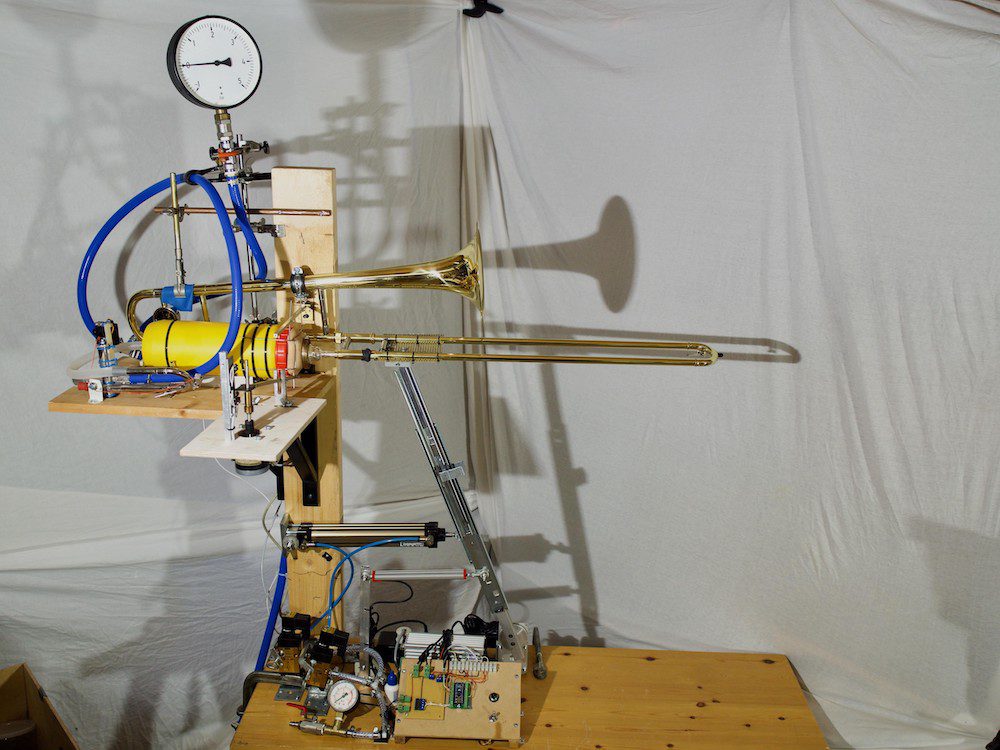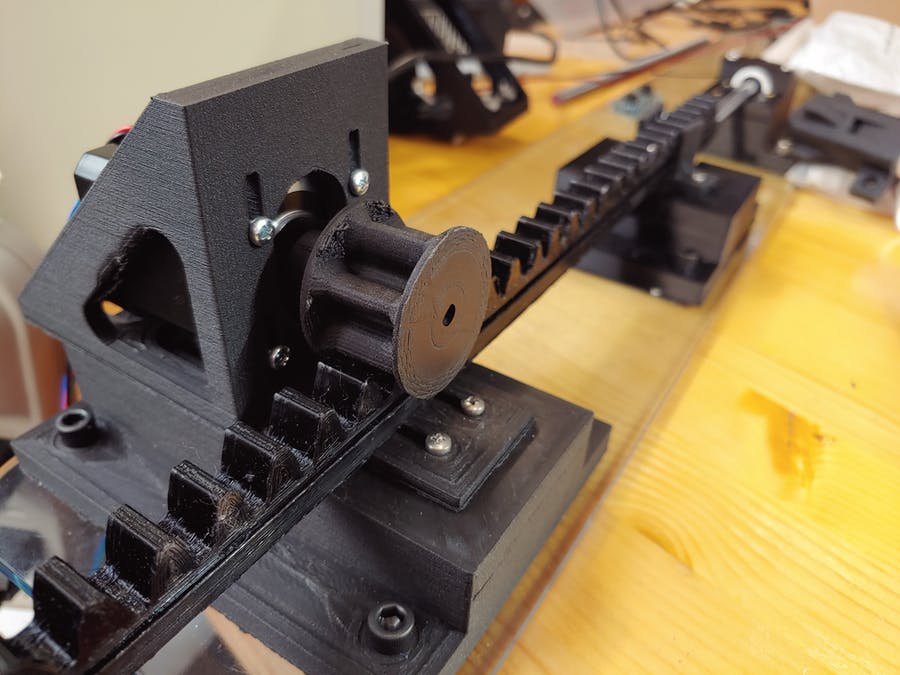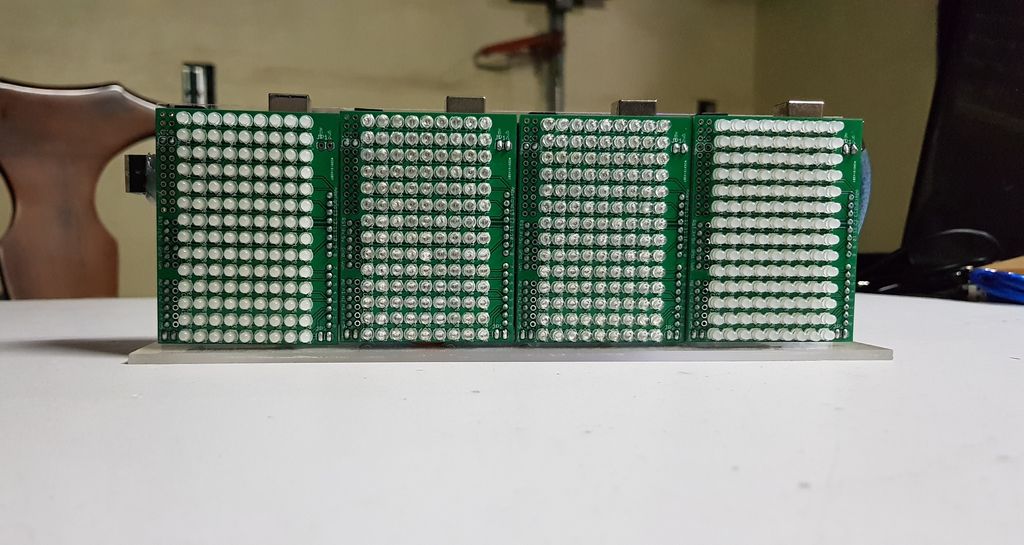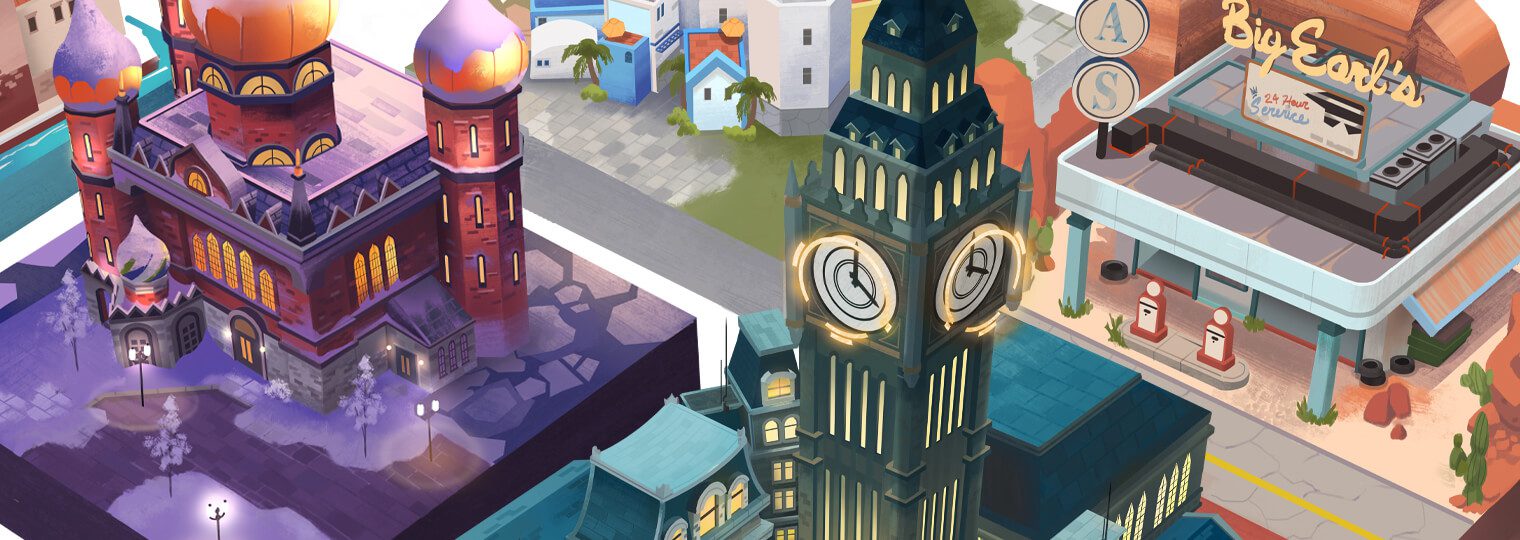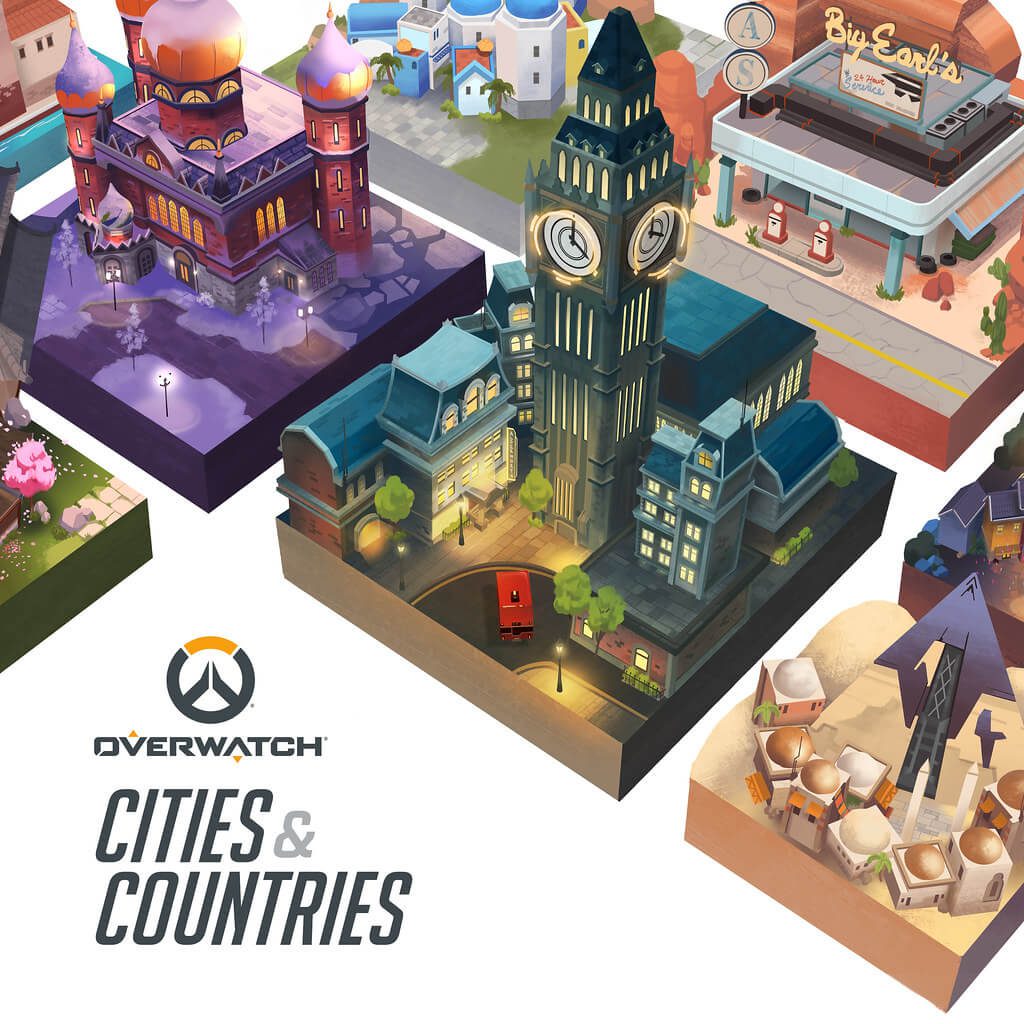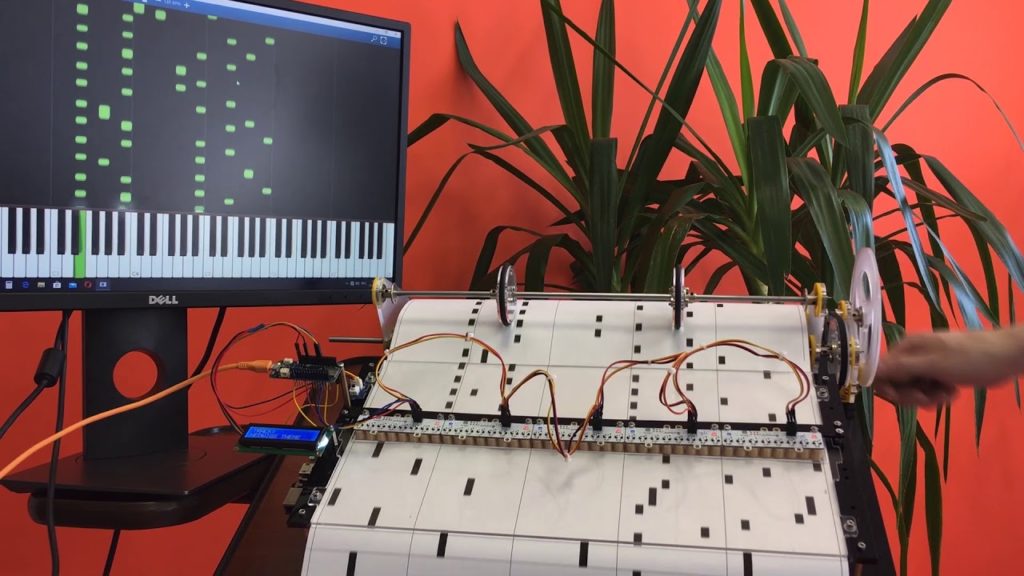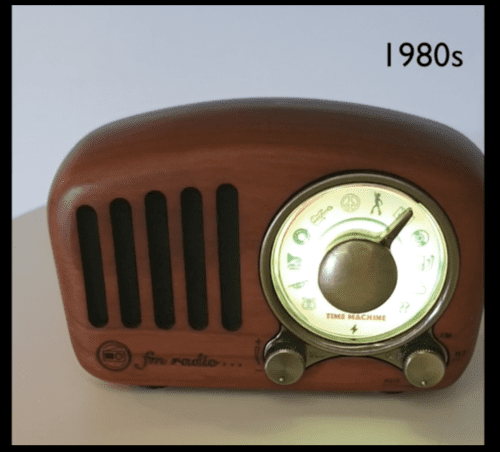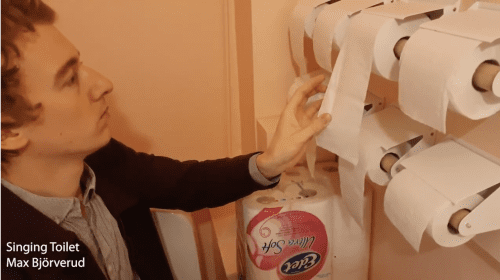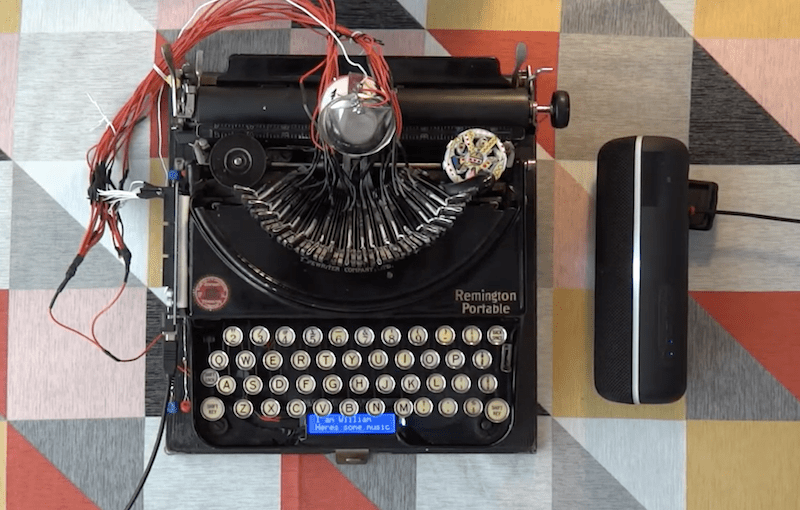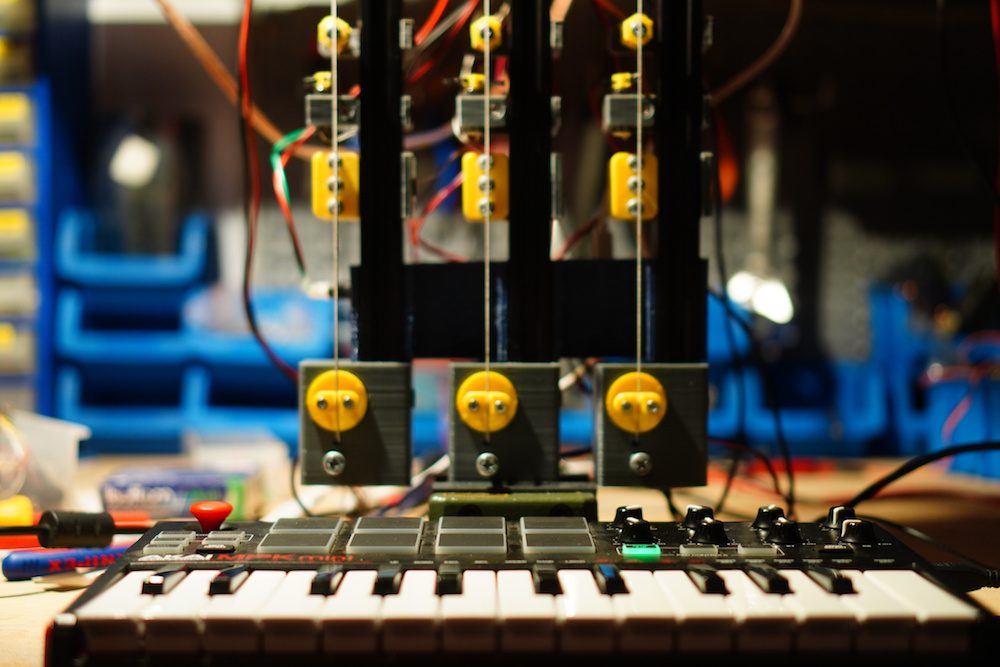Schlagwort: music
-

Syncing tunes to Christmas tree lights with the Arduino Opta
Reading Time: 2 minutesWe all know that one neighbor who always goes the extra mile when decorating for the holidays, and after taking inspiration from these large displays of light and sound, Marcelo Arredondo, Andres Sabas, and Andrea ZGuz of the Electronic Cats crew decided to build a smaller version for their Christmas tree using the Arduino Opta micro PLC.…
-

Reliving elementary school with a robotic recorder
Reading Time: 2 minutesThe recorder is a type of flute that is very popular in elementary schools because the instrument is so simple and inexpensive. If you were born in the last four decades and grew up in a western country, then there is a very good chance that you were required to learn how…
-

Code to the beat of your own drum during Black History Month 2023
Reading Time: 5 minutesWhen we think about a celebration, we also think about how important it is to be intentional about sound. And with this month of February being a celebration of Black history in the USA, we want to help you make some noise to amplify the voices, experiences, and achievements of the Black…
-

Tune into the God of War Ragnarök Soundtrack Listening Party stream November 17
Reading Time: 3 minutesAfter four years in the making, we are finally celebrating the release of God of War Ragnarök! With the success of God of War (2018) came tremendous pressure to give fans a sequel worthy of its predecessor. That meant new characters and enemies, new realms and creatures, and most excitingly for the…
-

Are you ready to go back to the future?
Reading Time: 3 minutesArduino Make Your UNO Kit is finally here The first Arduino UNO was launched back in 2005, with a clear purpose to allow everyone who had an idea to make it possible through a simple and open interface. Many years have passed, technology has evolved, but we never forgot that initial thrill…
-

A closer look at vinyl soundtracks for Ratchet & Clank: Rift Apart, Ghost of Tsushima, and Returnal
Reading Time: 5 minutesIt is said that good things come in threes, and today is no exception. We at PlayStation are thrilled to spotlight our latest trio of vinyl soundtrack releases, brought to you by our friends at Milan Records: Ratchet & Clank: Rift Apart, Ghost of Tsushima: Music from Iki Island & Legends, and…
-

The Piano Metronome is key to keeping the beat
Reading Time: 2 minutesArduino Team — June 16th, 2021 In the world of music, being able to keep time accurately is vital when playing a piece, as even small deviations in timing can cause the notes played to sound “off.” Ordinarily a device called a metronome is used to provide consistent ticks that the musician…
-

Raspberry Pi makes LEGO minifigures play their own music
Reading Time: 3 minutesWe shared Dennis Mellican’s overly effective anti-burglary project last month. Now he’s back with something a whole lot more musical and mini. [embedded content] Inspiration Dennis was inspired by other jukebox projects that use Raspberry Pi, NFC readers, and tags to make music play. Particularly this one by Mark Hank, which we…
-

The RoboTrombo is a MIDI-controlled robotic trombone
Reading Time: 2 minutesThe RoboTrombo is a MIDI-controlled robotic trombone Arduino Team — December 29th, 2020 Inspired by Wintergatan’s Martin Molin, iSax set out to create a MIDi-controlled robotic trombone of his own. Although the aptly named RoboTrombo may not replace professional trombone players anytime soon, it’s nonetheless an impressive musical hack. The instrument is controlled…
-

This ‘crazy’ spectrum analyzer visualizes tunes with four Arduinos and 504 LEDs
Reading Time: 2 minutesThis ‘crazy’ spectrum analyzer visualizes tunes with four Arduinos and 504 LEDs Arduino Team — July 26th, 2020 Spectrum analyzers are a great way to visualize music, and “TUENHIDIY” came up with an interesting take on this device using not one, but four Arduino Unos. Each board receives the same sound input via…
-

Who needs vinyl records when you’ve got Raspberry Pi and NFC?
Reading Time: 2 minutesRedditor Mark Hank missed the tactile experience of vinyl records so he removed the insides of an old Sonos Boost to turn it into a Raspberry Pi- and NFC-powered music player. Yes, this really works: [youtube https://www.youtube.com/watch?v=N02-eF822dY] The Sonos Boost was purchased for just £3 on eBay. Mark pulled all the original…
-

8 Fragen an die Komponisten des Overwatch-Soundtracks
Reading Time: 7 minutesWas ist das für eine Melodie? Ein neues Album zu Musik von Overwatch ist erschienen und auf Spotify, iTunes, Apple Music und Deezer verfügbar. Overwatch: Cities & Countries ist eine Musikkollektion, die die regionalen Theme-Songs der Overwatch Maps und die Musik der Missionen aus der ganzen Welt beinhaltet. Zusätzlich zur Veröffentlichung des…
-

New album of Overwatch music hits streaming services today, new composer Q&A
Reading Time: 7 minutesWhat is that melody? A new album of Overwatch music is live today, available now on Spotify, iTunes, Apple Music and Deezer. Entitled Overwatch: Cities & Countries, the collection of music features the regional themes of Overwatch maps and missions across the world. In addition to the new album release, starting tomorrow…
-

Die Entstehung eines Ohrwurms: Kero Kero Bonitos Titelmelodie für Bugsnax
Reading Time: 4 minutesMein Name ist Gus Lobban. Ich bin Songwriter, Producer und ein Drittel der Indiepop-Band Kero Kero Bonito. Im Januar dieses Jahres wurde unsere Welt komplett auf den Kopf gestellt: Kero Kero Bonito wurde Teil der wunderbaren Welt von Bugsnax! Ich werde nie vergessen, wie Phil von Young Horses mich anrief und direkt…
-

Anatomy of an earworm: Inside Kero Kero Bonito’s toe-tapping Bugsnax theme
Reading Time: 4 minutesMy name is Gus Lobban. I’m a songwriter, producer and one-third of the indie-pop group Kero Kero Bonito. In January, our world changed in a way that we couldn’t have imagined: Kero Kero Bonito were brought into the world of Bugsnax. I’ll never forget the briefing phone call — Phil at Young…
-

Go back in time with a Raspberry Pi-powered radio
Reading Time: 2 minutesTake a musical trip down memory lane all the way back to the 1920s. Sick of listening to the same dozen albums on repeat, or feeling stifled by the funnel of near-identical YouTube playlist rabbit holes? If you’re looking to broaden your musical horizons and combine that quest with a vintage-themed Raspberry…
-

These loo rolls formed a choir
Reading Time: 2 minutesHave all of y’all been hoarding toilet roll over recent weeks in an inexplicable response to the global pandemic, or is that just a quirk here in the UK? Well, the most inventive use of the essential household item we’ve ever seen is this musical project by Max Björverud. [youtube https://www.youtube.com/watch?v=gf6pai97n2o] Ahh,…
-

This maker turned an antique typewriter into a MIDI drum machine
Reading Time: < 1 minuteThis maker turned an antique typewriter into a MIDI drum machine Arduino Team — April 23rd, 2020 Vintage typewriters are truly amazing pieces of technology, but unlike modern keyboards, they are decidedly one-purpose machines. William Sun Petrus, however, had other ideas for his 1920s-era Remington Portable typewriter, augmenting hammers with wires…
-

Greg’s Harp is an Arduino-powered robotic string instrument
Reading Time: 2 minutesGreg’s Harp is an Arduino-powered robotic string instrument Arduino Team — April 12th, 2020 Frank Piesik recently designed a robotic three-stringed instrument for his friend, Gregor, that features a unique sound and mechanical arrangement. Notes are selected by an array of 12 servos — four for each string — which pull down…
